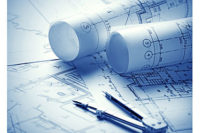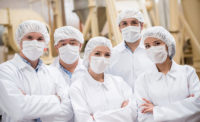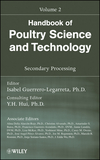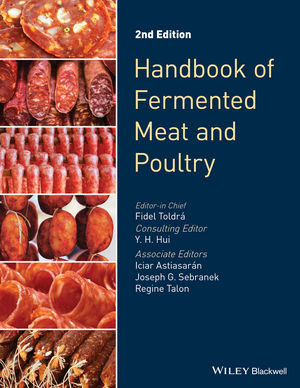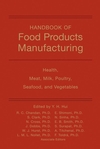
Protein plant of the future? You may be thinking, “I can’t worry about a future plant when I am focusing on my current plant’s operations.”
But without forward thinking NOW, your protein plant of the future may be a boarded-up building surrounded by a weed-infested parking lot, or an over-built mega-structure burdened with fixed overhead costs and no workforce. The last decade has delivered both scenarios, as our industry has witnessed consolidations, bankruptcies, acquisitions and plant closings with only a few plant openings … just to keep hope alive.
Visualize entering a plant where production activities are maximized and non-value-added work is reduced or eliminated. You enter the office area and see work dutifully performed without reams of paper used; data is collected, disseminated and analyzed electronically, and there is no line waiting for the copy machine.
As you pass the manager’s office you see monitors being fed input from the plant floor. The information will be timely and accurate, but it will not be part of what I call a magical MES (manufacturing executing system). The operation will still need human intervention (supervisors) and will still rely on accurate data from the production floor.
After walking to the changing area, you don a sterile jumpsuit (made from recycled material) and, after passing though several stages of clean areas for sanitizing, enter the production area.
Once on the floor, the first change you’ll notice is no pallet jacks serpentine between conveyors, wasting time and labor. Product is transported to common areas by conveyors, properly designed to incorporate cleanability and functionality. Lines are running at a steady pace with no starting and stopping since bypasses and surge areas have been factored into the layout.
Double and triple handling of the product has been eliminated as well as wasted capital and energy on pallet jacks. A harmonic flow of product and workers is observed as you enter into each production area that has been controlled on access. From the warehouse to the yards and from deboning to the cooker and freezer, wasted movements and tasks have been eliminated.
This model future plant will be dictated by the type of process or function. Whether it is beef or poultry, slaughter or fabrication, further processing or case ready, each plant must evolve or fail.
In the sense of a physical plant footprint, earlier we saw small regional processors consolidated into mega-structures that would “do everything.” At planning, those plants were designed to perform a fixed function, but when the protein industry changed, those plants could not adapt, and some went by the wayside while others continue to struggle covering fixed costs.
Our short virtual walk through the future plant will show how the Protein Plant of the Future will encompass safety (food and employee), flexibility, efficiency and sustainability.
Safety
First and foremost, this plant will incorporate designs that provide safety to the security of the food and employee environment.
“But my current plant is already designed to consider safety and ergonomics,” one may argue. For the most part this is true, but as research, testing and processes improve, a plant may be missing opportunities to advance.
For example, the AMI Facilities Design Task Force developed guidelines to evaluate the entire envelope in which a plant should be designed. These guidelines will be followed at the first stage of the new facility layout. Specific engineering disciplines will drill down to the areas of walls, conduit, drains, curbs, etc. We will not be able to spend time on these finer details of the future plant in this article, but as you read, the overall big picture of the plant will be revealed.
In addition to the shell and infrastructure of the future plant, equipment design and layout will equally be critical. Whether boning a chuck, defatting a ham, breading and cooking poultry, or styling meat for case ready, the design and layout of the equipment will be critical for employee safety and ergonomics.
Another guideline that will be followed closely is the AMI Sanitary Guidelines for Equipment Design for Ready-to-Eat Processing Equipment. Although the guidelines were developed for RTE, all plants should adopt these guidelines as they provide the best defense against problems that could occur with poor sanitation.
Equipment incorporated will be designed for functionality as well as cleanability. Depending on the type of facility, the equipment will be moveable. “Moveable?” you ask? Yes; now before you jump to conclusions, understand that it doesn’t mean everything is on casters and rolled around. Equipment will be capable of being changed to different locations or feed other lines.
Of course certain equipment, such as freezers and cookers, will be hard-plumbed. With such ability to change processes, even slaughter floors will become more flexible.
Flexibility
In similar fashion to the dinosaurs, some plants have been slow to react and adapt to the changing environment. Consumers and retailers change continually and rapidly. Having served a valuable function during their era, the dedicated plants cannot be sustained in a one-dimensional plane.
“We’ve always done it this way,” is a statement I have heard all too many times in my career, from the “experts” who have been at a particular plant for possibly 30-plus years. Well, if you are operating in a vacuum, sometimes the oxygen gets thin.
Yes, there are valid reasons why tasks have been done the same way, but it doesn’t give one the expertise or authority to ruin the future plant by not opening up to improvements. All too often, slaughter/fabrication plants - whether beef, pork or poultry - rarely change unless there is some type of equipment improvement.
Current process may be virtually obsolete in 20 years. It’s a bold statement, to be sure, but one that will occur. The reason is productivity.
In the beef plant of the future, fabrication will be a paced boning system similar to pork pace lines. Forget the arguments about grade change or “beef is too variable.” The process is the same regardless of species or processing. Without the flexibility of the processing floor and equipment, your bottlenecks will remain the same, and in the case of beef, you will remain handcuffed by the chuck boners.
Flexible lines will allow the Protein Plant of the Future to easily adapt to different products, processes and customers. Certain customers may require specific packaging equipment, while another one uses a different method or equipment. Lines that can feed in and out of the core processing equipment will benefit the overall efficiencies of the plant.
Efficiencies
The Protein Plant of the Future will be productive ONLY if is efficient. There are times when a new product is introduced, and instead of planning for an engineering solution, people are thrown at the production line to “get the product out the door.”
You probably should be, if you aren’t already, evaluating your efficiencies daily. But merely evaluating processes won’t improve efficiency, which is why the future plant will implement lean-manufacturing processes such as Six Sigma, TQM, etc.
No matter which is used, the purpose is for continual improvement and reduction of waste and non-value-added work. To build on flexibility and efficiencies, the entire plant and processes must be sustainable.
Sustainability
Any system, process or plant must be sustainable. In the “green” environment in which we now live, “sustainability” is bantered around not only in our industry but across almost all industries and in the media. The Protein Plant of the Future will be designed for sustainability and will consider the areas of location and transportation, energy consumption and sources, as well as byproduct utilization.
The future plant will be strategically located. Major slaughter operations will not be moved, although some smaller, regional ones may spring up. Slaughter and first-processing plants will be located at the source areas, but the future plant will need to be located closer to the customer at locations in regional markets. Why? Transportation.
Highway taxes, fuel and carbon emissions will dictate that the future plant’s location be in an area where freight savings can be gained along the entire logistics chain. Your future plant will have the heavy loads coming in from a greater distance, while the lighter finished loads going to the customers will be in a smaller radius, reducing carbon emissions and saving energy.
Other energy savings will include more efficient plant-cooling systems. The flexible lines will be powered by electric drives and a move away from hydraulic systems which are not efficient - although hydraulics will still be used for certain equipment. The system will be powered by other sources depending on the area of the country.
Alternative sources will be utilized for non-essential production areas such as welfare areas and offices. The internal use of byproducts will also aid in sustaining the plant - such as the current method of capturing methane gas from the lagoons.
Byproduct usage will be the other area where sustainability will be enhanced in the new plant. Of course the plant will utilize all byproducts for bio fuels, proteins for technical use or pet food or other uses. Other “wastes,” such as feathers, litter, wastewater, etc., will be leveraged to be renewed as fuels or to be created into other products. The opportunities will be endless in the future plant.
Conclusion
The future is easy to predict for our industry - it’s one word: change. We have seen plants changing; from lumbering, aging ones to nimble and environmentally sensitive.
Whether we look at civilizations, the automotive industry or the protein industry, if you don’t change, you will become extinct. So visualize the areas outlined in this article and soon the Protein Plant of the Future will become today’s protein plant.
